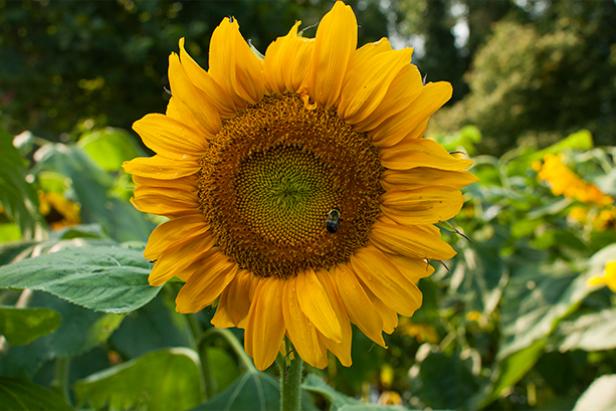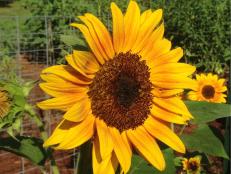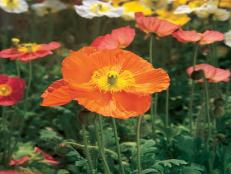How Long to Germinate Sunflower Seeds
Fill your garden with the living sunshine of sunflowers. The magic starts with one little seed.

Dan Lipe
The classic sunflower is a garden favorite. Blossoms that follow the sun’s daily march across the sky come in a variety of sizes and colors. You can even find sunflowers that only grow 12 inches tall—the perfect size for pots on a porch. Sunflowers grow easily from seed, so much so that these bloomers often plant themselves beneath birdfeeders.
If you’re sowing intentionally, it doesn’t take long to germinate sunflower seeds. With the right conditions, seeds pop out of soil in 7 to 10 days. The best time to plant sunflower seeds is when soil has warmed a little in spring. Ideal soil temperature to germinate sunflower seeds is 55 to 60 degrees Fahrenheit. Typically when soil is that warm, lilacs or peonies are in full bloom. Or you can track soil temperatures online to know when it’s the right time to plant in your region.
Perfect Planting
When planting sunflower seeds, tuck them into soil between 1 and 2 inches deep. Space them roughly 6 inches apart. Soil temperature and moisture influence how long it takes for sunflower seeds to germinate, but in most cases you should see sprouts in 7 to 10 days. When seedlings have the second set of leaves, thin them 2 to 3 feet apart if your goal is seed production. If you’re growing flowers for bouquets, skip thinning. The final plants will be shorter with longer stems and flowers that work well in arrangements.
Keep ‘Em Growing
Sunflowers come from regions where summer drought is part of the season, but it’s a good idea to water plants as they’re establishing. The other critical time for water is three weeks before and after flowering. Like any plant, deep watering encourages root growth, which provides the anchor that helps hold those tall stems topped with heavy flower heads.
Work some slow-release fertilizer into your planting area for sunflowers. That typically provides enough nutrition to fuel growth, although more fertilizer does mean bigger flowers. But take it easy on the plant food, because too much nitrogen leads to an abundance of leaves—and a shortage of flowers.
Harvest Time
Sunflower seed heads are ripe when the back of the flower disk turns from green to yellow-brown. With large-headed varieties, the flower heads nod or turn toward the ground. If you want to harvest seeds, cut sunflower heads, leaving at least 12 to 18 inches of stem attached. Hang the heads in a warm, well-ventilated space where rodents don’t have access. Let the seed heads cure for several weeks before removing seeds. Spread seeds on a flat surface, letting them dry a few days before packing away. For freshest flavor, stash in airtight jars in a refrigerator.
Tips and Tricks
- Extend the season. Plant a few sunflowers every two to three weeks to have new blooms until fall’s first frost.
- Outsmart critters. Use barrier fencing to protect sunflowers from deer, and/or cover seed heads with tulle or spun bonded polyester garden blankets.
- Stand up to wind. If you’re growing sunflowers in a windy location, consider staking tall varieties. Sunflower seed heads make plants top-heavy and easily toppled with strong winds.
- Slow down plants. Sunflower leaves, stems and seeds release substances that inhibit the growth of certain plants. That’s why grass may die beneath your sunflower birdfeeder. These toxins are harmless to people and eventually break down in soil.














































